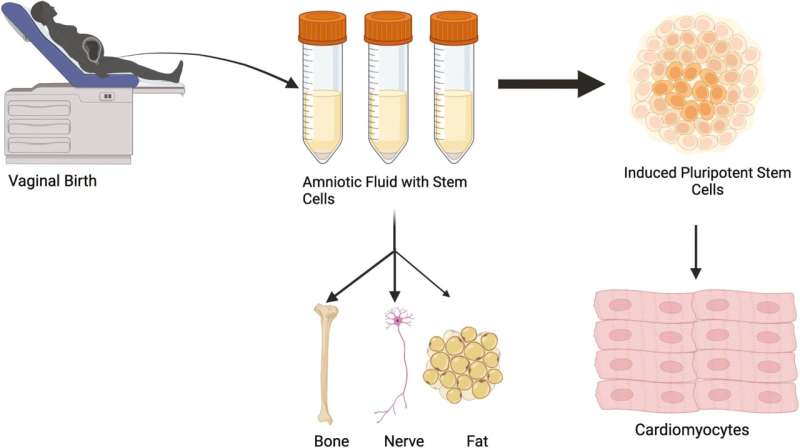“We can then turn those cells into beating heart cells and use them later in treating congenital heart defects,” said the study’s senior author Jeffrey Jacot, Ph.D., associate professor of pediatrics and bioengineering at the University of Colorado Center for Bioengineering in the CU School of Medicine. “These results allow for an expanded and readily available source of amniotic stem cells beyond traditional collection through amniocentesis.”
The study was published today in the journal Stem Cells Translational Medicine.
Amniotic fluid surrounds and provides cushioning, nutrients and growth factors to the developing fetus. It also contains numerous cell types originating from the fetus and fetal membranes. For decades, the clear fluid has been used as a way to detect fetal genetic anomalies. This was often done through amniocentesis, a routine but invasive procedure. It is often done during the second trimester limiting access of these stem cells to certain pregnancies, Jacot said.

